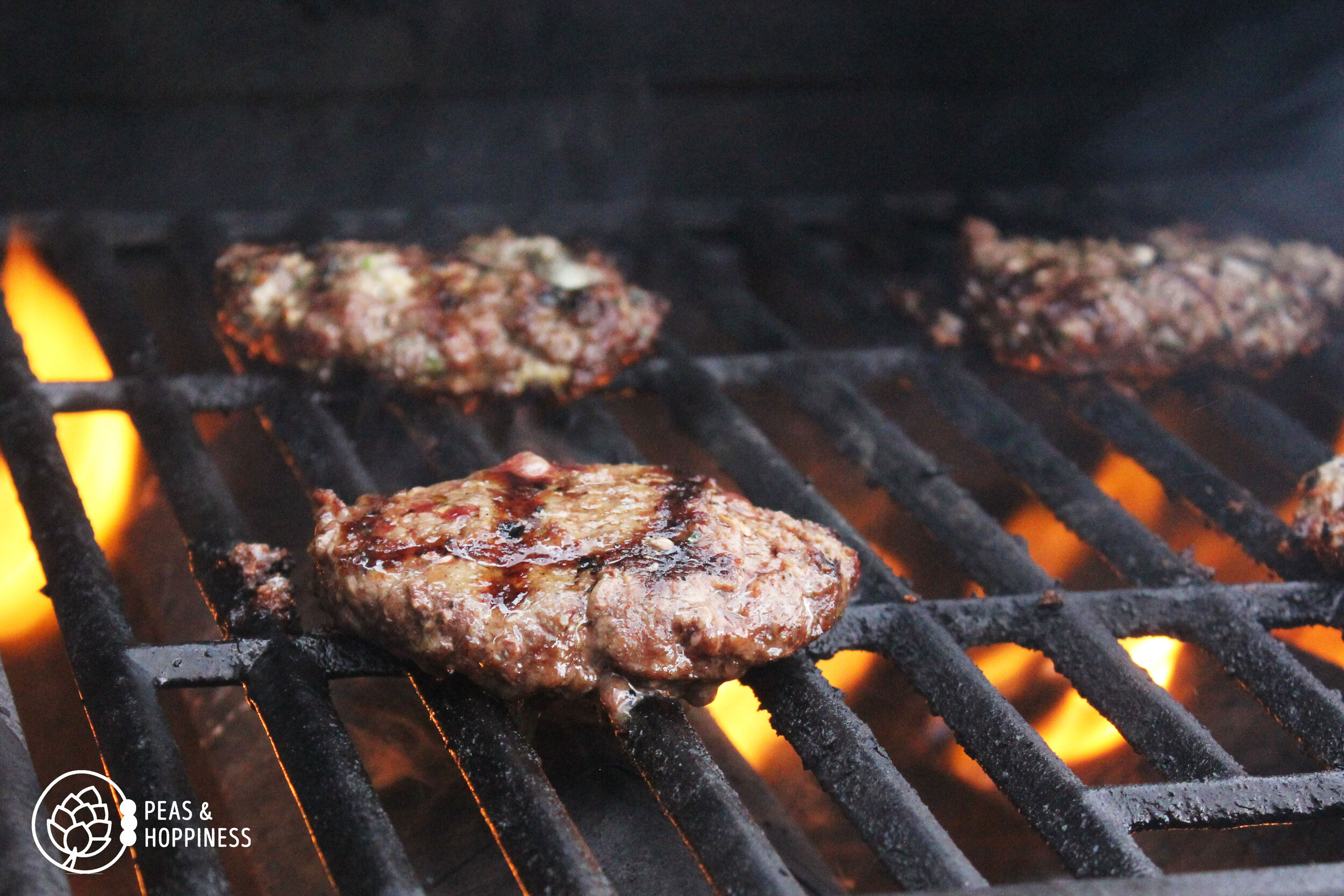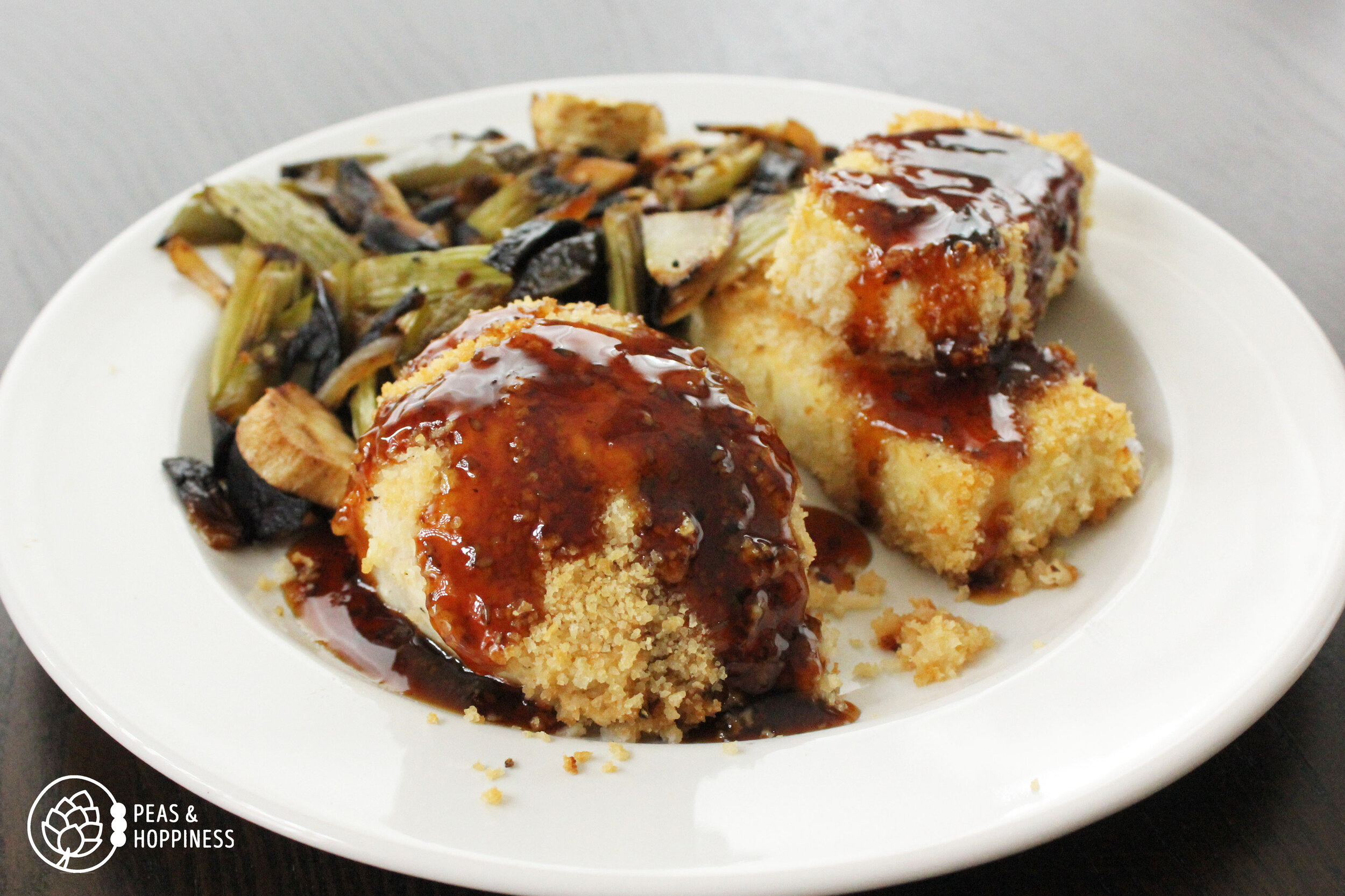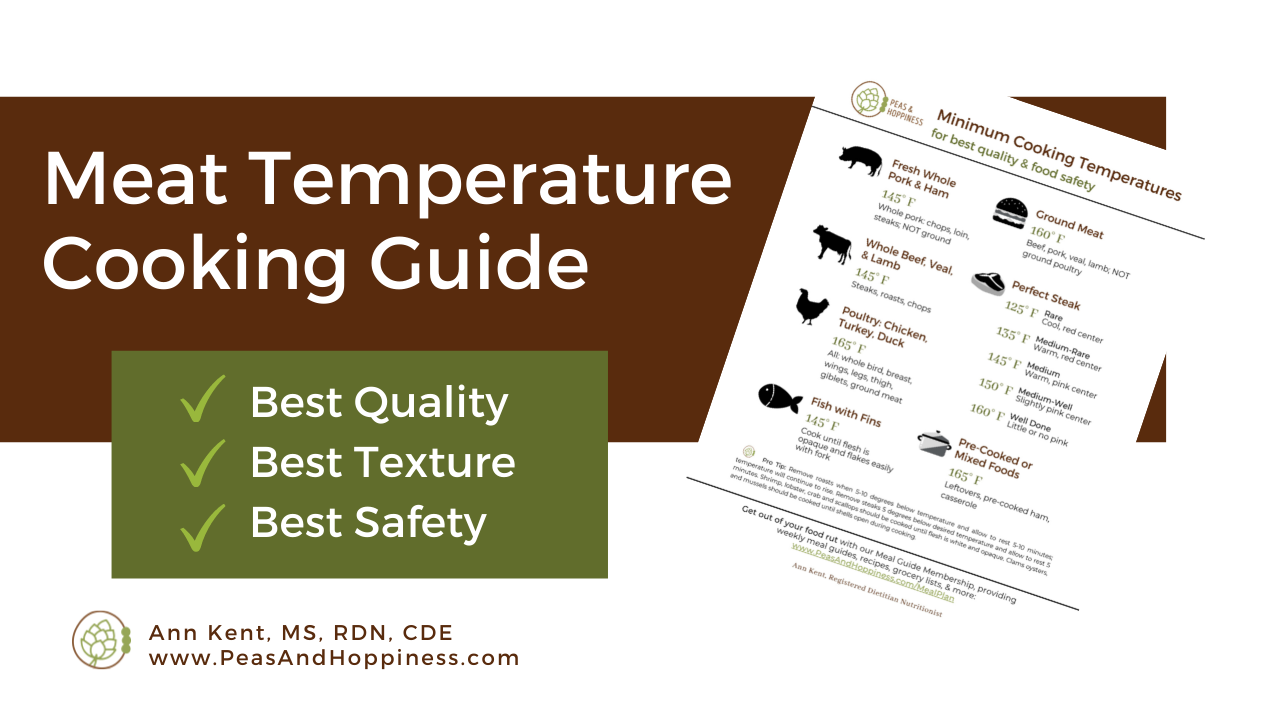
Basil & Blue Burgers featured on the Peas & Hoppy Meal Guides
For a foolproof way to cook roast, pork chops, and chicken breast perfectly every time, make sure to use this easy trick.
When I first started cooking for myself, I began cooking with more plant-based proteins and cutting down on meat. I did this for less altruistic reasons than you might think.
My primary reason was budget – I was finishing grad school and not making much as a research assistant – but if I’m being really honest, one of the main reasons was because I didn’t know how to cook meat.
It was intimidating. How do you know what meat is a good cut? How do you make it tender and juicy? It’s pretty expensive and disappointing to pull a pork tenderloin out of the oven which is totally dry and practically inedible.
I was constantly over-cooking meat because of all the scary foodborne illnesses I learned about in my training to become a dietitian. Better safe than sorry, I thought… except this led me to the belief that chicken breast is the texture of shoe leather when cooked.
Fast-forward to cooking for the first time with my now-husband. He likes meat. He prefers it on the rare side. And he’s not afraid of foodborne illness (he’s crazy!!!!).
Cue: several arguments in which he would grill dinner for us and I would then put my piece of meat in the microwave to cook it several more minutes.
I’m here to share with you the secret I discovered to end the spousal arguments and instead enjoy perfectly cooked meat every time.
Buy a Food Thermometer
Right now. Go buy one. If you don’t have a local kitchen store, buy this food thermometer on Amazon. A food thermometer is much more important than a timer when it comes to cooking meat (see next point).
These are a few things to look for when purchasing a food thermometer:
Choose a digital food thermometer. The old dial thermometers can become inaccurate over time if the dial is warped or damaged. Plus, it can be difficult to see the exact temperature of the food – and if your goal is precision, this isn’t very helpful.
Look for an oven-safe probe with either a wireless connection or with a long wire to the digital reader.
Wireless probes are fancy, but keep in mind they are more expensive, the battery in the probe runs down (so you may need to charge it before your large roast is done), and the life of the device may be limited because it works with an app on a phone. Nonetheless, wireless probes are pretty cool.
I recommend a dual-probe digital thermometer with long oven-safe cords so you can place the probes in different places and watch the temperature rise without opening the oven. A bonus is that most of these have a temperature alert setting so you can set an alarm based on the internal temp of your meat rather than a timer.
Disposable and Pop-Up Thermometers should be thrown away and never used. These are NOT to be trusted as the accuracy can vary wildly. When you buy your Thanksgiving turkey, immediately pull out and dispose of the pop-up thermometer and use the digital probe thermometer instead.
Cook Meat to the Proper Temperature, Not According to Time in the Recipe
It turns out most meat is still slightly pink when fully cooked. Which means in all of those arguments my hubby and I had about cooking meat to the proper temp he could have been right. (But probably not, of course.)
I didn’t know this until I bought the food thermometer I mentioned above – because it is really, REALLY difficult to know how long to cook a piece of meat.

Baked Panko Sesame Chicken featured on the Peas & Hoppy Meal Guides; recipe inspired by Shannon Peterson
These are a few factors that can affect the cooking time:
-
Thickness of the cut of meat
-
Temperature of (your) oven, grill, or stove
-
Type of cut of meat
-
If you have a lid on the dish
-
Other food mixed with meat (like a stir-fry)
-
Elevation at which you live (if meat is submerged in water, as water boils at a lower temperature at higher elevation)
-
The relative position of Saturn to the Earth (not really, but it seems like it)
Because of all these different factors, the cooking time in a recipe is a starting place rather than an absolute.
To adjust for this, set the timer according to the smallest time amount – so if a recipe tells you to cook the chicken breast for 20-30 minutes, set a timer for 20 minutes… and then check the temperature of the chicken with your food thermometer at that time.
This is the ONLY way you can really know if your chicken is done or if it needs more time.
So instead of guessing how long you need to cook the chicken breast, use that food thermometer and cook it right the first time!
Meat Temperature Cooking Guide
Although all the recipes I write for the Peas & Hoppy Meal Guides include the proper temperature to cook meat to, I find that keeping this Meat Temperature Cooking Guide close at hand is very – well, handy. Download this printable version to tape inside your kitchen cabinet door.
For more helpful meat cooking tools, check out these essential grilling tools and other kitchen recommendations.
Happy meat cooking!
Ann
P.S. Links to recommended products are affiliate links; I earn a commission for purchases you make using these. To be honest, I’d rather you go to your local kitchen store and find these items, but if you’re in a pinch or short on time, these links are here to help you out.

FREE Downloadable Meat Temperature Cooking Guide for Perfectly Cooked Meat every Time!

2 thoughts on “Proper Meat Cooking Temperatures for Best Quality & Food Safety”
This was really helpful. I read one of your other blog posts a few months ago and bought the thermometer with the two wires and it works fantastic in my grill or my oven. Thank you!
I’m so glad to hear this! Thermometers have made such a big difference for me, I’m so happy to hear they’re helping you, too!